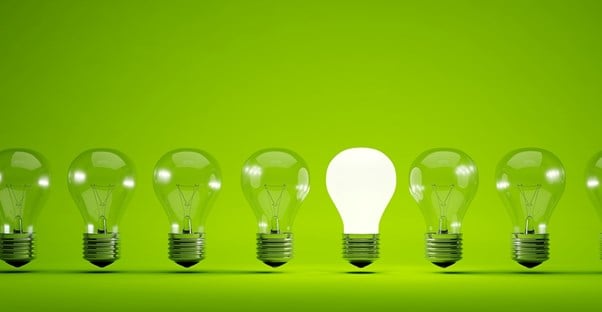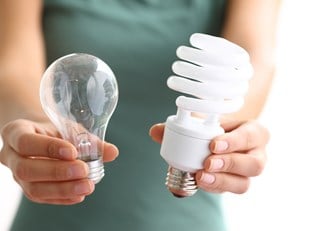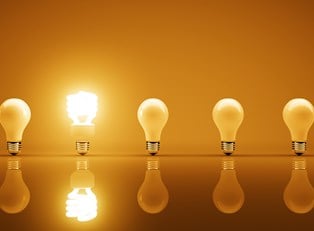Let’s talk about lighting, shall we? About 130 years ago, Thomas Edison “perfected” his design for the light bulb. Perfected is in quotes only because, while the invention was groundbreaking, the design is actually far from perfect. His bulbs ran electric current through a wire filament to emit light and the same basic design is used in incandescent bulbs today.
The design works well to light up a room, but, in terms of energy efficiency, it’s lacking to say the least. Some people have called these bulbs “heaters that also emit light.” Anyone who has touched one of these bulbs after it’s been in use can testify to the heat they put off. What does that mean for your electric bill? Well, all that heat is energy produced by consuming your electricity, and, unless you want or need hot bulbs for some reason, that’s wasted energy. So, incandescent bulbs use more wattage than is needed to create the amount of light they produce.
I know what you’re thinking: Why does this article hate on my incandescent light bulbs so bad? The answer: You’ll save a good deal of money by ridding your home of these energy wasters and looking into lighting alternatives.
Natural Light Is Best
Let’s start with the obvious: the best source of lighting for your home, in regards to your electric bill, is natural light. On a sunny day, skylights and windows with blinds and curtains drawn back are the cheapest way to light your home—effective too.
Other Light Options
Halogen lamps, while still putting off a great deal of heat, are alternatives that use electricity more efficiently. Compared to standard incandescent lamps these use up to 40% less electricity. There are, however, cooler (pun) and cheaper solutions.
Compact fluorescent bulbs (CFLs) emit a soft light by way of a fluorescent tube, often in a coil or spiral. These produce the same amount of light as incandescent bulbs, but last longer and consume 1/3 to 1/5 the amount of energy. They look pretty cool, too.
Light-emitting diode (LED) bulbs are an increasingly common choice for homeowners wanting to make the switch to more efficient light bulbs. Using considerably less wattage, containing no glass or mercury, and boasting an impressive lifespan, these bulbs come with plenty of advantages over incandescent light fixtures.
Magnetic induction bulbs or mercury vapor lamps (called “acandescent” bulbs by some companies) are some of the cheapest forms of energy efficient light bulbs. Just as efficient as an LED, these bulbs, in use industrially since the early 90’s, are now available and sold for residential use. They work by using “a magnetic field to excite mercury to give off UV light, which is converted to visible light by a phosphor coating.” Thanks for using laymen’s terms, Wikipedia.
So, take the new wealth of knowledge you have undoubtedly gained from this article and use it to save yourself some money. Governments around the world have been passing measures and encouraging citizens to “phase out” incandescent bulbs for a while now, so follow their lead and get with the times, Edison.




